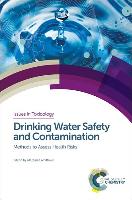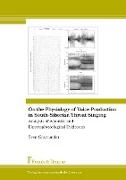- Start
- Drinking Water Safety and Contamination: Methods to Assess Health Risks
Drinking Water Safety and Contamination: Methods to Assess Health Risks
Angebote / Angebote:
Access to clean water is a necessary precondition for life and health. Pathogens, antimicrobial agents, pharmaceuticals, and chemicals leaching from drinking water system components or introduced into water tables as a result of hydraulic fracking can pollute drinking water supplies. Despite widespread improvements in global access to clean drinking water, impure drinking water continues to affect quality of life for many in less-developed regions. Risk assessment and comparative hazard assessment methods are used by public health scientists to assess the likelihood of adverse health effects resulting from contaminated water, and to reduce morbidity or mortality from exposure to polluted water. The widespread dissemination of such tools will improve public health of humans around the world.
Risk assessment tools and methods, comparative hazard assessment tools and quantitative microbial risk assessment methods have developed greatly in recent years. This book highlights the ways in which these risk assessment methods can be used to mitigate the impacts of emerging contaminants, unplanned chemical releases, and pathogens in drinking water supplies on human health. It describes the methods in which it is possible to predict and assess the health risks that water contaminants pose for humans. It goes on to cover the effects of Pharmaceutical, Fracking, Textile industrial activities on water toxicity.
This book is useful primarily for academics and industrialists working in fields related to Safety and Hazards, Toxicology, Environmental Science and Sustainable industry, but it is also a valuable resource for postgraduates and institutional libraries.
Fremdlagertitel. Lieferzeit unbestimmt




